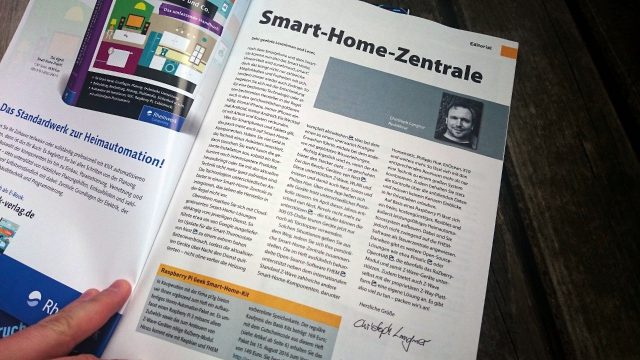Table of Content
In the Pi Zero and Zero W, the 40 GPIO pins are unpopulated, having the through-holes exposed for soldering instead. The Zero WH (Wireless + Header) has the header pins preinstalled. The Raspberry Pi Zero W 2 uses the RP3A0-AU CPU, a 1 GHz 64 bit ARM Cortex A53, on 512MB of SDRAM. Documentation states this "system-on-package" is a Broadcom BCM2710A1 package, using a BCM2837 Broadcom chip as core, which is an ARM v8 quad-core. The Raspberry Pi 3 also uses the BCM2837, but clocked at 1.2 GHz.

There are even ways to move the full operating system there if needed. Due to the fact that it was not created with a focus of being the main building block for various DIY projects, the Intel NUC offers nothing comparable to the Raspberry Pi’s GPIO. As the reasons to build a home server, so are the options numerous, and it could fill a whole series of blog posts to cover them all.
Software apps and online services
For those cases you can get a small and cheap Zigbee to USB stick. I use the popular CC2531, other also use the Conbee II. If you plan to also use Zwave devices then have a look at the Aeotec Z-stick, a USB to Zwave converter. Building your own server should be as cheap and easy as possible. After-all it is supposed to be better than all those hubs! At the same time it should be really flexible and expandable.

He loaded the winning code while in orbit, collected the data generated and then sent this to Earth where it was distributed to the winning teams. Covered themes during the competition included spacecraft sensors, satellite imaging, space measurements, data fusion and space radiation. Slackware ARM – version 13.37 and later runs on the Raspberry Pi without modification.
Re: Home Server with raspberry pi
The Pi will run forever (only problem I ever had was a bad SD card after some time, so make backups!), without consuming too much energy. The version with 1 GB RAM has been abandoned and the prices of the 2 GB version have been reduced. The Pi 4 is also powered via a USB-C port, enabling additional power to be provided to downstream peripherals, when used with an appropriate PSU.

Everything worked fine, you have a lot of software you can install (and we’ll discuss about software later) and it is very light. Well I went with a Raspberry PI 4 model B of course, with 4GB of RAM. Now, after using this board for a few years, I have some comments on it and some expectation for a future Raspberry PI 5.
Third-party application software
Download the PBW's with your smartphone, your phone should install them on your watch. The pebble apps need configurations to talk to the server. To get access for the GPIOs, the application must be started by sudo. Want to make a robot to find you the best new mac and cheese recipes each day? Raspberry Pi offers computers to fit a huge range of needs and applications of all shapes and sizes. That must be why some people still have it installed on a separate device from their servers.
17 December 2012 – The Foundation, in collaboration with IndieCity and Velocix, opens the Pi Store, as a "one-stop shop for all your Raspberry Pi needs". Using an application included in Raspbian, users can browse through several categories and download what they want. Software can also be uploaded for moderation and release. 5 September 2012 – The Foundation announced a second revision of the Raspberry Pi Model B. A revision 2.0 board is announced, with a number of minor corrections and improvements.
Demonstrations of the board showed it running the LXDE desktop on Debian, Quake 3 at 1080p, and Full HD MPEG-4 video over HDMI. The Foundation's goal was to offer two versions, priced at US$25 and $35. They started accepting orders for the higher priced Model B on 29 February 2012, the lower cost Model A on 4 February 2013. And the even lower cost (US$20) A+ on 10 November 2014.

These features, while very cool and useful for other projects, will not help you with this home automation setup since you will be running the Raspberry Pi as a server and remoting into it from your PC. ServicePortSetupMosquitto1883You need to copy the config file above. Just go to the webpage and follow the setup wizardAll services we just installedThat’s it! You now have access to a lot of awesome smart home software and the setup is quite easy.
You do not want to pay hundreds of dollars for electricity bills annually for a piece of hardware that does not really add any significant value for you. That is why more power-efficient options like blue, raspberry pi, or NUCs might be the best for you. (as an example with the average kW cost in the US is 12 cents the cost of running NUC will be around $1 per month).

The solutions to these functional requirements make up the basis of the Smart Home system. Imager will ask you to choose the operating system and storage. Click on Choose OS, then Raspberry Pi OS , then Raspberry Pi OS Lite (64-bit).
Further, we can connect SPI , I2C (Inter-Integrated Circuit), and UART (Universal Asynchronous Receiver/Transmitter) devices, making the Raspberry Pi the ultimate interconnectivity home server. A very handy map of the different functionalities of the GPIO pins can be found at pinout.xyz. While performance might not the strongest discipline of the Raspberry Pi, its energy-efficient CPU allows for something most Intel and AMD PCs are incapable of. Having the Raspberry Pi passively cooled is in my opinion one of the best arguments for using it as a home server.

No comments:
Post a Comment